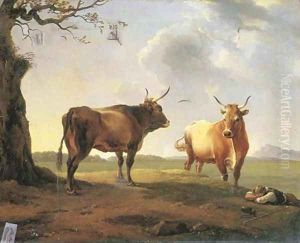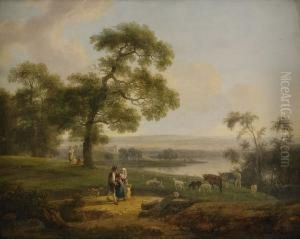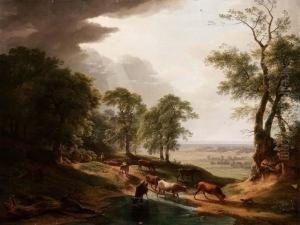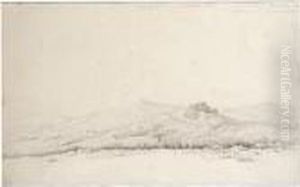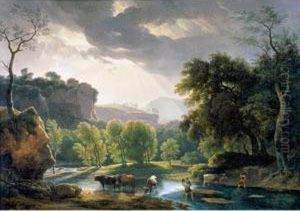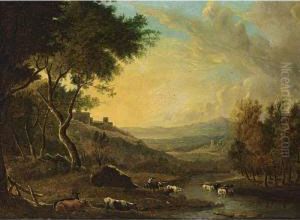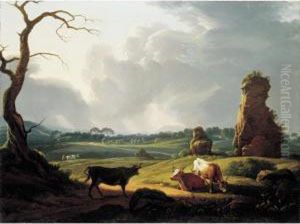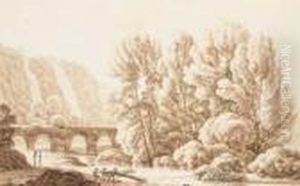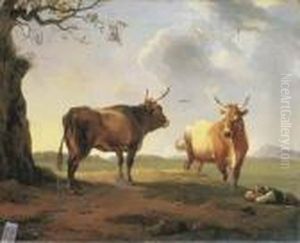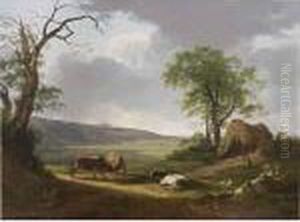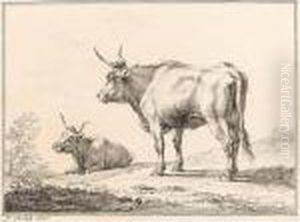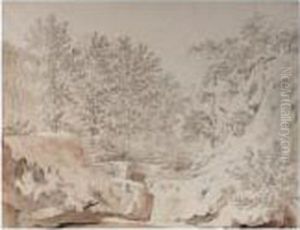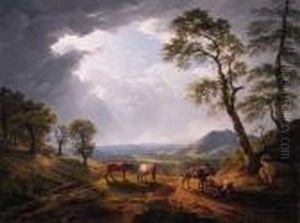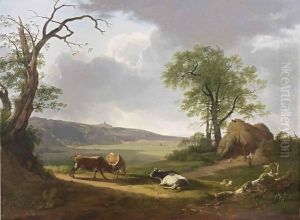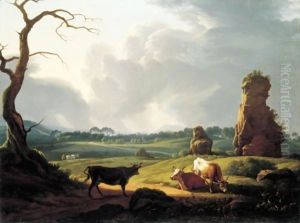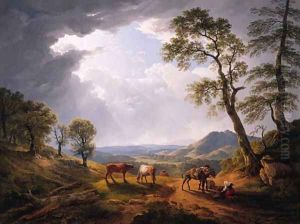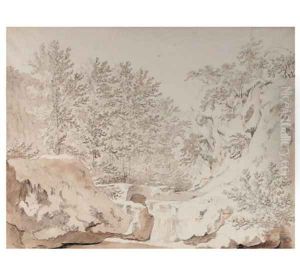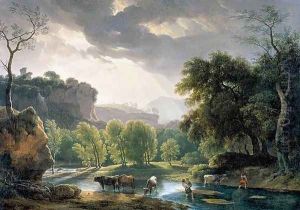Hendrik Voogd Paintings
Hendrik Voogd was a Dutch painter, born on September 9, 1768, in Amsterdam, Netherlands. He is often referred to as the 'Dutch Claude Lorrain' due to his Italianate landscapes that were heavily influenced by the work of Claude Lorrain, a 17th-century French painter known for his idealized pastoral landscapes. Voogd specialized in depicting the Italian countryside, particularly the areas around Rome, where he lived for most of his life after moving there in 1788.
Voogd studied at the Amsterdam Drawing Academy and won a prize that allowed him to travel to Italy. He settled in Rome, which was a popular destination for artists, becoming part of the Dutch artistic community there. He was particularly influenced by the Campagna, the low-lying area surrounding Rome, and his work is characterized by detailed and atmospheric renderings of this region’s light and landscape.
His paintings often feature classical ruins, lush vegetation, and a golden, diffused light, capturing the romantic and historical allure of the Italian landscape. Despite the classical subjects, his work eschewed the then-dominant Neoclassical style in favor of a more naturalistic approach, aligning him with the landscape tradition that would later be associated with the Romantic movement.
Voogd's works were appreciated by a European clientele, including the Dutch King Louis Napoleon. Unfortunately, he never achieved great fame in his homeland during his lifetime. His devotion to the Italian landscape meant that he remained in Italy and continued to paint in his adopted homeland until his death in Rome on December 4, 1839. Today, Voogd's work is recognized for its contribution to Dutch Italianate landscape painting and is held in various collections, including the Rijksmuseum in Amsterdam.
